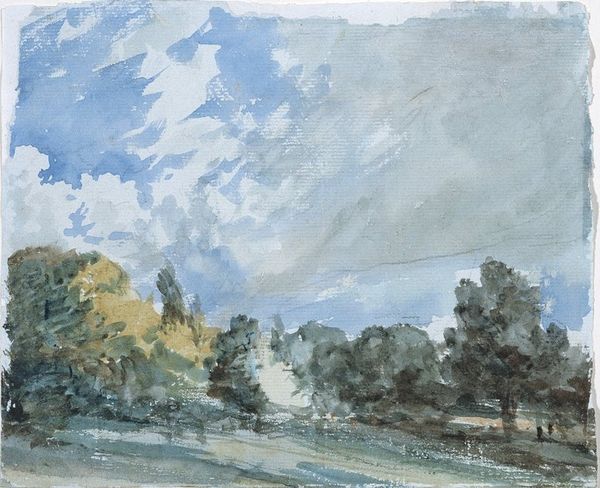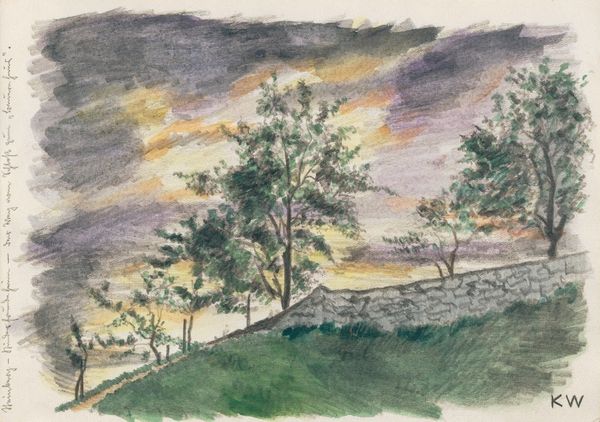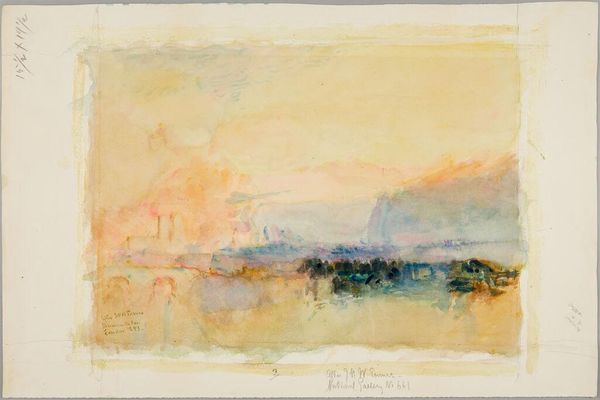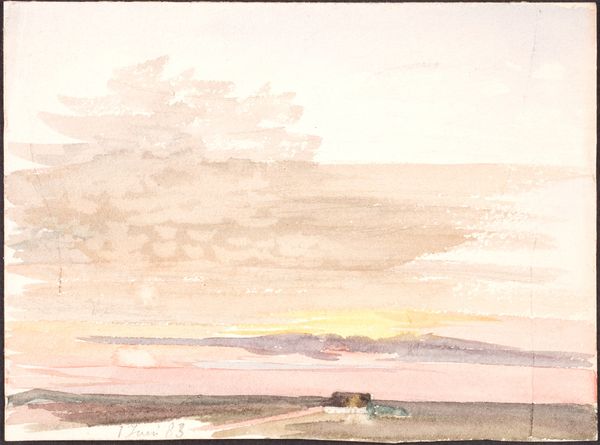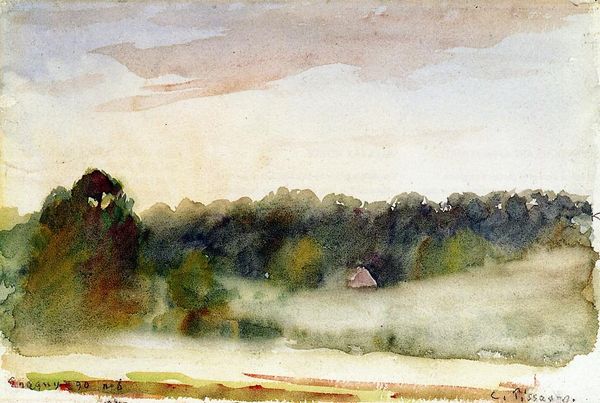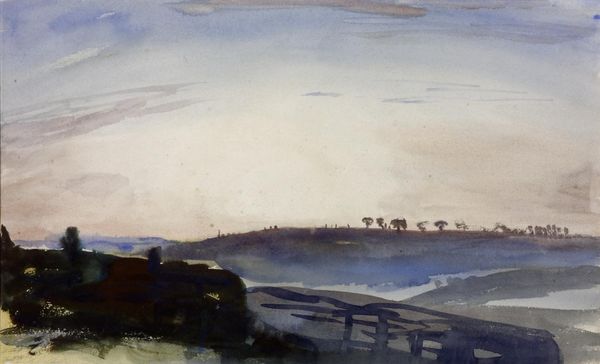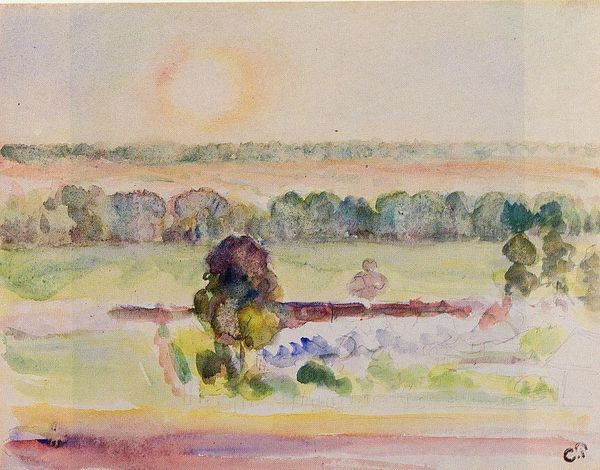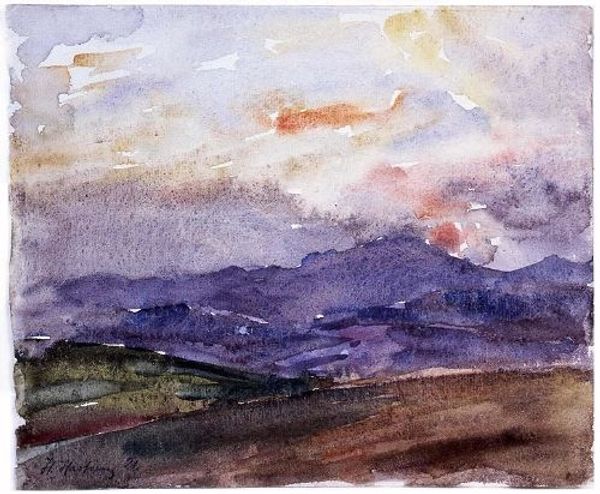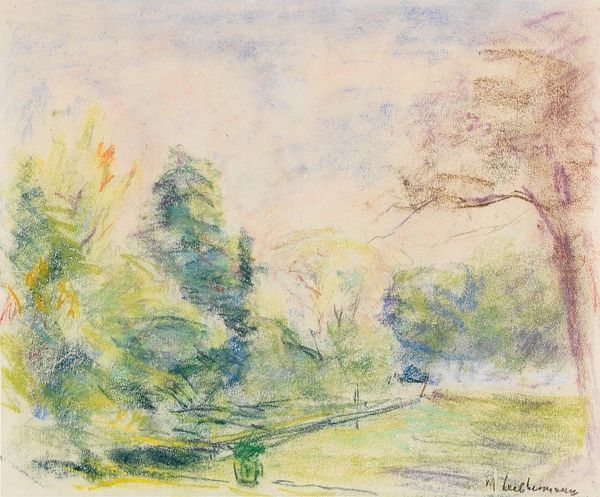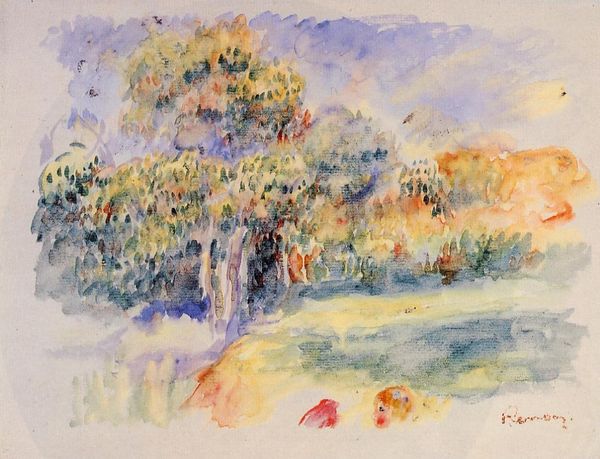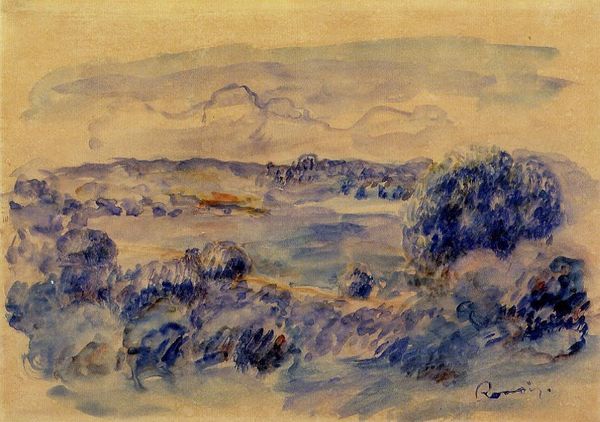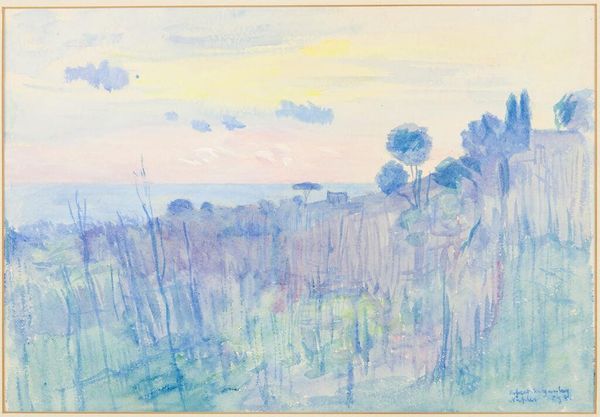
painting, plein-air, watercolor
#
sky
#
painting
#
impressionism
#
plein-air
#
landscape
#
watercolor
#
cityscape
#
post-impressionism
Copyright: Public domain
Editor: Here we have Camille Pissarro's watercolor, "Landscape at Eragny". It looks so ethereal. There’s almost a dreamlike quality with its hazy, soft brushstrokes. The buildings in the landscape seem to blend with the trees and the sky. It looks like Pissarro created this on the spot using plein-air techniques. How do you interpret this work? Curator: This watercolor provides a fascinating look at Pissarro's relationship to rural France and the burgeoning genre of landscape painting. Given its impressionistic and post-impressionistic stylistic origins, we see a movement away from strict academic representations. In terms of historical context, paintings like this show the increasing accessibility of art. Artists venturing outside the confines of the studio reflects a changing societal relationship to the natural world and the democratization of subject matter, would you agree? Editor: Absolutely! I see what you mean. It is a shift from the grand historical paintings to everyday scenes. So, plein-air painting could be interpreted as a rebellion against academic artistic norms? Curator: Precisely. Consider also the societal impact. Railroads facilitated artists' mobility to capture scenes directly. What was previously unseen becomes artistic subject matter. This watercolor now enters the art market, which helps reinforce the public's awareness and appreciation of everyday rural scenery. Pissarro subtly validates a new vision of French identity. Editor: I see it so clearly now; the landscape not just as a scene, but a statement! Curator: Yes, a celebration of place, a cultural product that both reflects and shapes society's view of itself. I had never considered Eragny in such an art-historically charged way. Thanks!
Comments
No comments
Be the first to comment and join the conversation on the ultimate creative platform.
